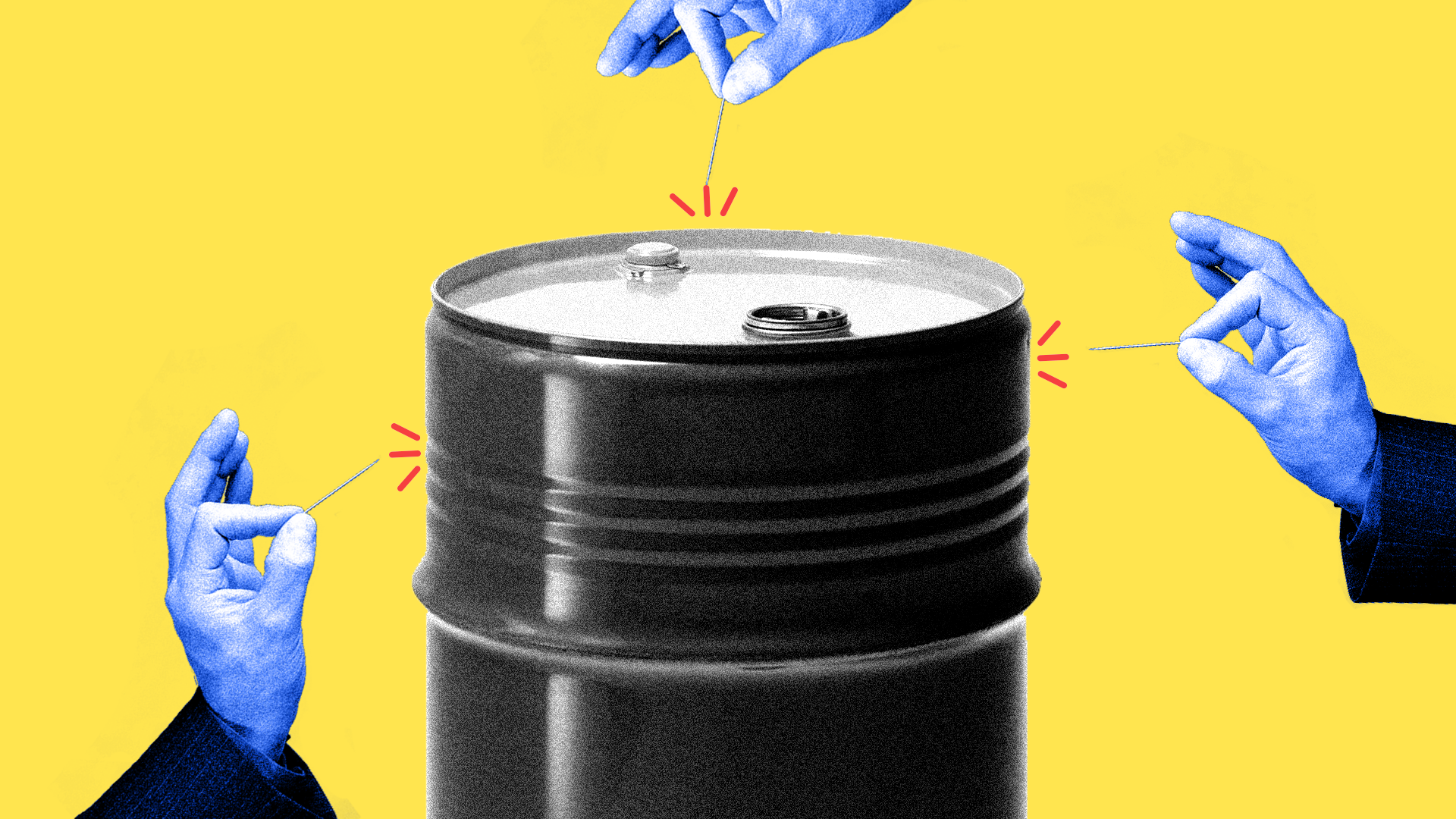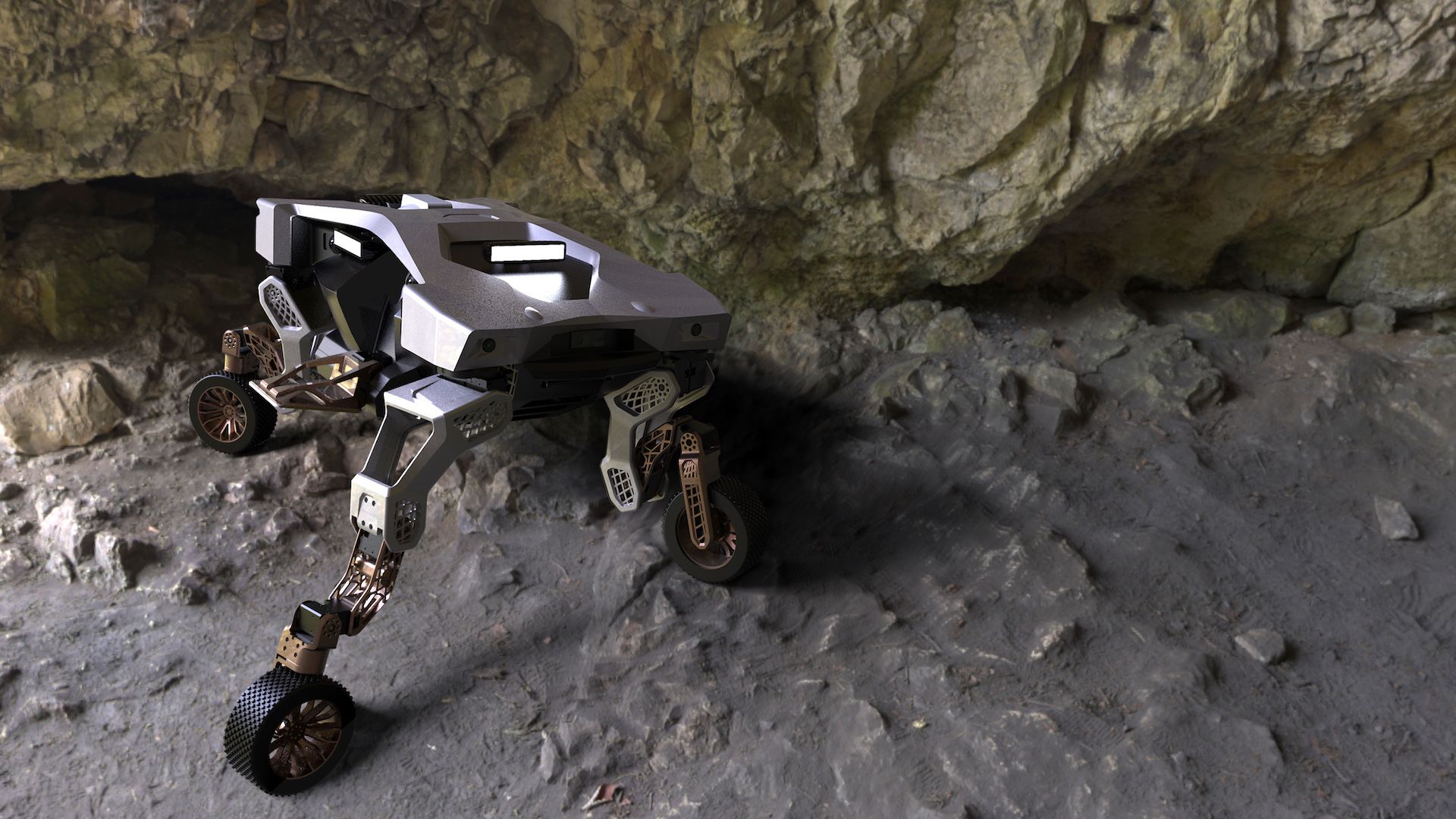| |
| |
| |
| Presented By the National Mining Association |
| |
| Generate |
| By Ben Geman ·Feb 11, 2021 |
| Good morning. Today's Smart Brevity count is 1,246 words, 4.7 minutes. 🔍 President Biden, VP Harris and Transportation Secretary Pete Buttigieg will meet today with a bipartisan group of senators to discuss "modern and sustainable" infrastructure. - Why it matters: Biden wants lots of new spending on climate-friendly projects.
🎶 And today marks the 1992 release date of the Cowboy Junkies album "Black Eyed Man," which provides today's intro tune... |
| |
| |
| 1 big thing: Shell peers into a future with less oil |
 |
|
| Illustration: Annelise Capossela/Axios |
| |
| Royal Dutch Shell said this morning that its oil production peaked in 2019 and is expected to decline by roughly 1%-2% annually as the company diversifies into lower-carbon energy products and business lines. Why it matters: It signals how some of the world's most powerful oil-and-gas companies are positioning themselves for a world taking climate change more seriously and responding to calls from investors and activists to do more. Driving the news: The news arrived in Shell's wider update this morning on its pledge last year to become a "net-zero emissions" business by 2050 while, it hopes, staying attractive for shareholders. The company intends to raise dividends by roughly 4% annually. - Shell said its carbon emissions likely peaked in 2018.
- It also laid out steeper targets for reducing carbon intensity — that is, emissions per unit output.
- Shell plans to cut intensity by 6%-8% by 2023, 20% by 2030, and 45% by 2035.
The big picture: Europe-based multinationals all have aggressive long-term emissions targets and are moving more deeply into areas like renewables, power services and carbon removal — even as fossil fuels remain their dominant businesses and investments. - This morning Shell said it plans to expand its electric vehicle charging network from roughly 60,000 charge points today to 500,000 by 2025.
- It aims to sell 560 terawatt-hours a year of power to homes and businesses by 2030, double today's levels.
- Shell is also eyeing the expansion of its hydrogen and biofuels businesses, among other efforts. That includes developing "integrated hydrogen hubs to serve industry and heavy-duty transport."
CEO Ben van Beurden said their overall plans will "drive down carbon emissions and will deliver value for our shareholders, our customers and wider society." What they're saying: Several activist groups were critical. "We welcome this step with cautious optimism. However, Shell's new targets still won't lead to Paris-consistent emissions levels," said the activist shareholder group Follow This. The environmental group Friends of the Earth said Shell's efforts are insufficient. - "Only if CO2 emissions are to decrease drastically in absolute terms in the coming years we can prevent dangerous climate change," the group said.
- And Bloomberg notes that both Friends of the Earth and Greenpeace believe the company is "leaning too heavily on reforestation and carbon capture and storage."
Yes, but: Via Reuters, Adam Matthews of the Church of England Pensions Board, which works with companies on climate, said: "Shell's net zero target is industry-leading and comprehensive as it covers all their carbon emissions." |
    |
| |
| |
| 2. The long and "fragile" wait for oil's post-pandemic return |
| Oil demand is slated for a large bounce-back from the pandemic that will tighten the market a lot, but it's going to take a while, the International Energy Agency said. Why it matters: "The rebalancing of the oil market remains fragile in the early part of 2021 as measures to contain the spread of COVID-19, with its more contagious variants, weigh heavily on the near-term recovery in global oil demand," IEA said in its monthly oil market analysis today. The big picture: IEA sees demand rising on a full-year basis in 2021 by 5.4 million barrels per day, which means the recovery of about 60% from last year's pandemic-fueled collapse. - But it'll take a while. They see demand actually falling this quarter compared to the last three months of 2020, while a "favourable economic outlook underpins stronger demand in the second half of the year."
- The tighter market is on the way though (with all the necessary caveats about COVID's trajectory).
- IEA sees global crude stockpiles falling significantly in the second half of the year as demand rises, while new crude supplies from outside OPEC are modest.
Go deeper: IEA sees tighter oil market despite demand caution, modest supply optimism (S&P Global Platts) |
    |
| |
| |
| Bonus: IEA sizes up Biden's early oil moves |
 |
|
| Illustration: Rebecca Zisser/Axios |
| |
| The effects of President Biden's restrictions on oil-and-gas leasing and permitting on federal lands and waters will be limited in the near term, IEA said this morning. Driving the news: IEA's monthly oil market report says it doesn't see a "material impact on U.S. production in the short term." - "Operators onshore and offshore have built up a large inventory of leases on federal acreage (partly in anticipation of the change) as well as inventories of drilled but uncompleted wells (DUCs) that will allow them to sustain current rates of activity for several years," it notes.
Why it matters: The leasing freeze and temporary permitting restrictions have been among the highest-profile energy moves of the new administration. - They're drawing heavy pushback from the industry, Republicans and some oil-state Democrats.
- About a quarter of U.S. oil production comes from federal lands and waters.
Yes, but: The policies are causing significant concern in New Mexico, where lots of the state's production is centered on federal lands. |
    |
| |
| |
| A message from the National Mining Association |
| Infrastructure projects depend on mining |
| |
 |
| |
| U.S. mining provides minerals for everything from highways and bridges to ports and electric grids. But there's a catch. Our import dependence on these key minerals has doubled in two decades, even though we have significant deposits of minerals here at home. See how we can rebuild and create jobs. |
| |
| |
| 3. Ranking 2020's corporate clean power deals |
 Large companies' procurement deals for new renewable power capacity in the U.S. jumped last year to their highest level ever at 10.6 gigawatts, the Renewable Energy Buyers Alliance (REBA) said. Why it matters: Big corporations have emerged as an important driver of new solar and wind power projects as costs have fallen and they look to meet sustainability pledges. The 10.6 GW in REBA's database of large buyers' deals is about 13% higher than 2019 and far above the 1.5 GW of annual procurement in 2016. Driving the news: Amazon was the biggest contractor of new capacity last year at roughly 3.2 GW, with the rest of the top 10 seen in the chart above. Overall, 35 corporate buyers announced 98 deals last year, REBA said. How it works: While the trend is upward over the years, the company-by-company activity levels move around. - In 2019, Facebook was the top U.S. dealmaker, followed by AT&T.
- Overall, the tech industry has been a major player in this arena.
Of note: The REBA data tracks procurement from off-site, utility-scale projects and onsite developments over 20 megawatts. It captures various kinds of deals, including power purchase agreements, direct ownership, and tax equity investments. Go deeper: |
    |
| |
| |
| 4. Two EV notes: Trade and Toyota |
| Bloomberg explains a closely watched ruling Wednesday from the U.S. International Trade Commission... - "SK Innovation Co.'s South Korean-made batteries will be banned from the U.S. for 10 years, dealing a potential blow to efforts by Ford Motor Co. and Volkswagen AG to ramp up production of electric vehicles," it reports.
- Yes, but: The article and others note that the body will allow four years' worth of imports needed for Ford's upcoming electric F-150, and two years' worth of imports for VW's U.S. electric vehicle lines.
Speaking of EVs, Toyota said it's planning to introduce two fully electric vehicles and one plug-in hybrid in the U.S. market later this year. "The company gave few specifics on the vehicles during a presentation Wednesday, but said one electric vehicle would be an SUV," the Associated Press reports. |
    |
| |
| |
| 5. One future thing: Hyundai's driverless robot |
 |
|
| Hyundai's "intelligent ground excursion robot." Photo courtesy of Hyundai. |
| |
| That strange-looking thing is Hyundai's newly unveiled concept for a "ground excursion robot" that operates without a driver — and can reach some very tight corners. Driving the news: Hyundai said it's designed to access "remote" and "extreme" terrain for uses like delivery of goods, scientific missions, or emergency aid after a natural disaster. - It can operate with wheels or as a "four-legged walking machine," the company said.
- Hyundai tells Axios it's a battery electric vehicle with the option of having an internal combustion engine as a "range extender."
Why it matters: It could eventually become a real-world thing (even if it never operates on the moon, which Hyundai called an option for this kind of concept). - CNET reports that Hyundai is "seriously pursuing this type of legged vehicle for eventual production."
- Car and Driver quotes John Suh, head of Hyundai's New Horizons Studio, saying that beta versions for testing could arrive around 2023 or 2024, and a production version could follow about five years later.
Go deeper: Hyundai's TIGER 'ultimate mobility vehicle' concept is the size of a housecat (Engadget) |
    |
| |
| |
| 6. Quote of the day |
| "We should not have made these investments." Who said it: Equinor CEO Anders Opedal, talking to Bloomberg about its U.S. shale acquisitions. Why it matters: Equinor's dumping its acreage in North Dakota and Montana for a fraction of what it paid for it. The decision signals the wider difficulty of making money in shale. |
    |
| |
| |
| A message from the National Mining Association |
| Infrastructure projects depend on mining |
| |
 |
| |
| U.S. mining provides minerals for everything from highways and bridges to ports and electric grids. But there's a catch. Our import dependence on these key minerals has doubled in two decades, even though we have significant deposits of minerals here at home. See how we can rebuild and create jobs. |
| |








No comments:
Post a Comment